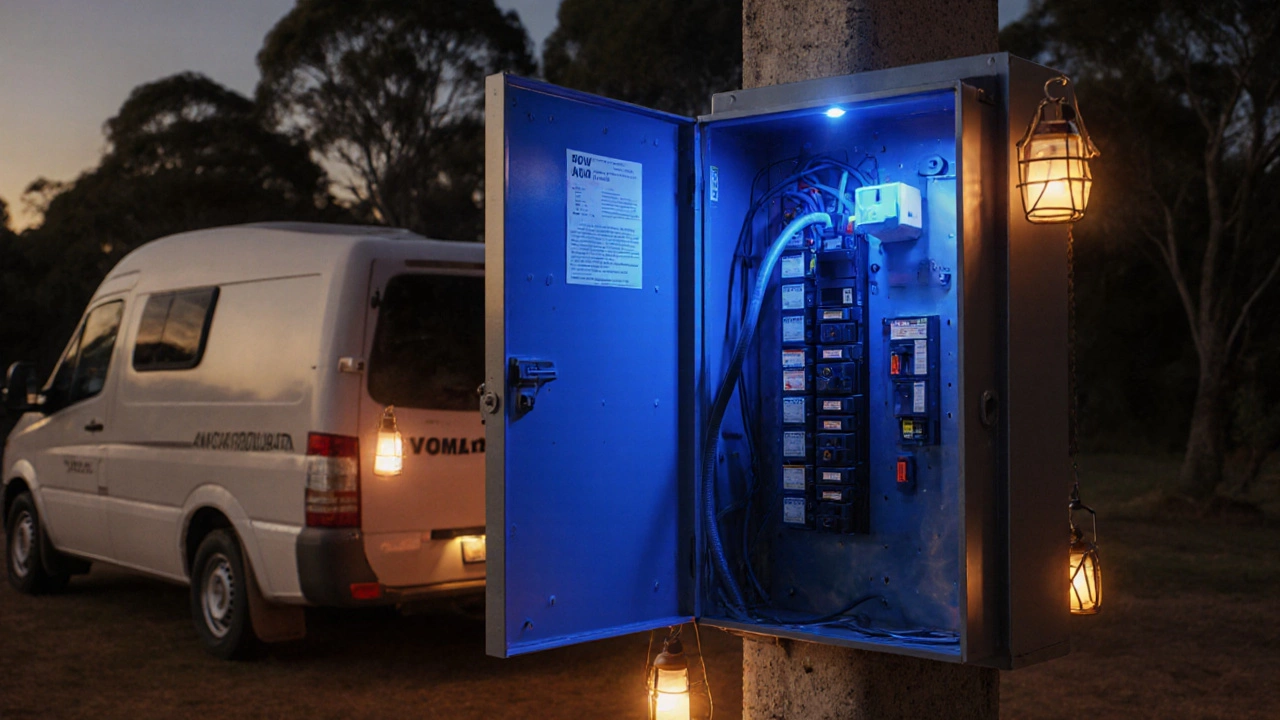Campsite Electricity: Powering Your Motorhome Adventures
When dealing with campsite electricity, the supply of power at a campground that lets you run lights, appliances and gadgets in your motorhome. Also known as campground power, it can come from fixed hookups, solar panels, generators or portable battery packs. Understanding how campsite electricity works is the first step to a hassle‑free road trip.
One major player in the off‑grid scene is solar panels, photovoltaic devices that convert sunlight into usable electricity for your campsite needs. Solar panels influence campsite electricity by reducing reliance on grid hookups and letting you stay longer in remote spots. Another cornerstone is the generator, a fuel‑driven unit that creates AC power when you’re far from any mains supply. Generators are essential when you need high wattage for heaters or kitchen appliances, and they require careful ventilation and noise management.
Common Power Options at Campsites
Campsite electricity encompasses three basic delivery methods: direct hook‑ups (usually 13‑amp or 15‑amp), portable power stations, and fuel‑based generators. Direct hook‑ups provide steady AC power but demand compatible plugs and may have usage limits. Portable power stations—often called battery banks—store energy from solar panels or a wall outlet and let you run 12‑volt devices like LED lights, pumps and a 12‑volt TV without any noise. Running a 12‑volt TV off a battery is a popular way to keep the entertainment low‑key while preserving fuel for the generator.
Choosing the right mix depends on three factors: power demand, campsite availability, and noise tolerance. If you plan to cook with an electric kettle and power a fridge, a 13‑amp hookup plus a small solar array can cover most needs. For high‑power appliances like a microwave or electric heater, a reliable generator becomes a must‑have. Off‑grid enthusiasts often combine a solar‑charged portable power station with a backup generator, creating a hybrid system that balances quiet operation with backup reliability.
Safety is another key piece of the puzzle. All campsite electricity setups require proper grounding, surge protection, and correct cable sizing. Overloading a hookup can trip the circuit breaker and damage sensitive electronics. Using a portable power station means you need to monitor voltage and avoid deep discharging the batteries, which shortens their lifespan. Generators should be placed at least 2 metres away from the motorhome and run outdoors to prevent carbon monoxide buildup.
Beyond the hardware, timing matters. During daylight hours, solar panels can feed power directly to your devices, reducing the draw on your battery. At night, the stored energy in the portable power station takes over, and if you run out, the generator steps in. This three‑stage flow—solar, battery, generator—keeps your campsite electricity reliable and efficient.
Whether you’re boondocking on a Scottish hill, staying at a bustling UK caravan park, or finding a hidden spot in the English countryside, the principles stay the same: know your power needs, match them with the right source, and always respect safety rules. Below you’ll find a curated list of articles that dive deeper into each of these topics, from solar sizing tips to generator maintenance tricks, giving you the tools to stay powered wherever the road leads.
-
 VIEW POST
VIEW POSTHow Does Electricity Work at Campsites? A Practical Guide
Oct, 8 2025|0 CommentsLearn how campsite electricity works, from grid hookups and amperage to generators, solar backups, safety tips, and load management for a hassle‑free camping stay.